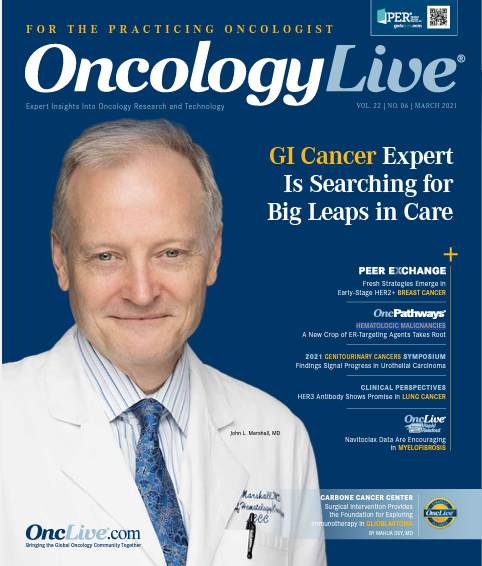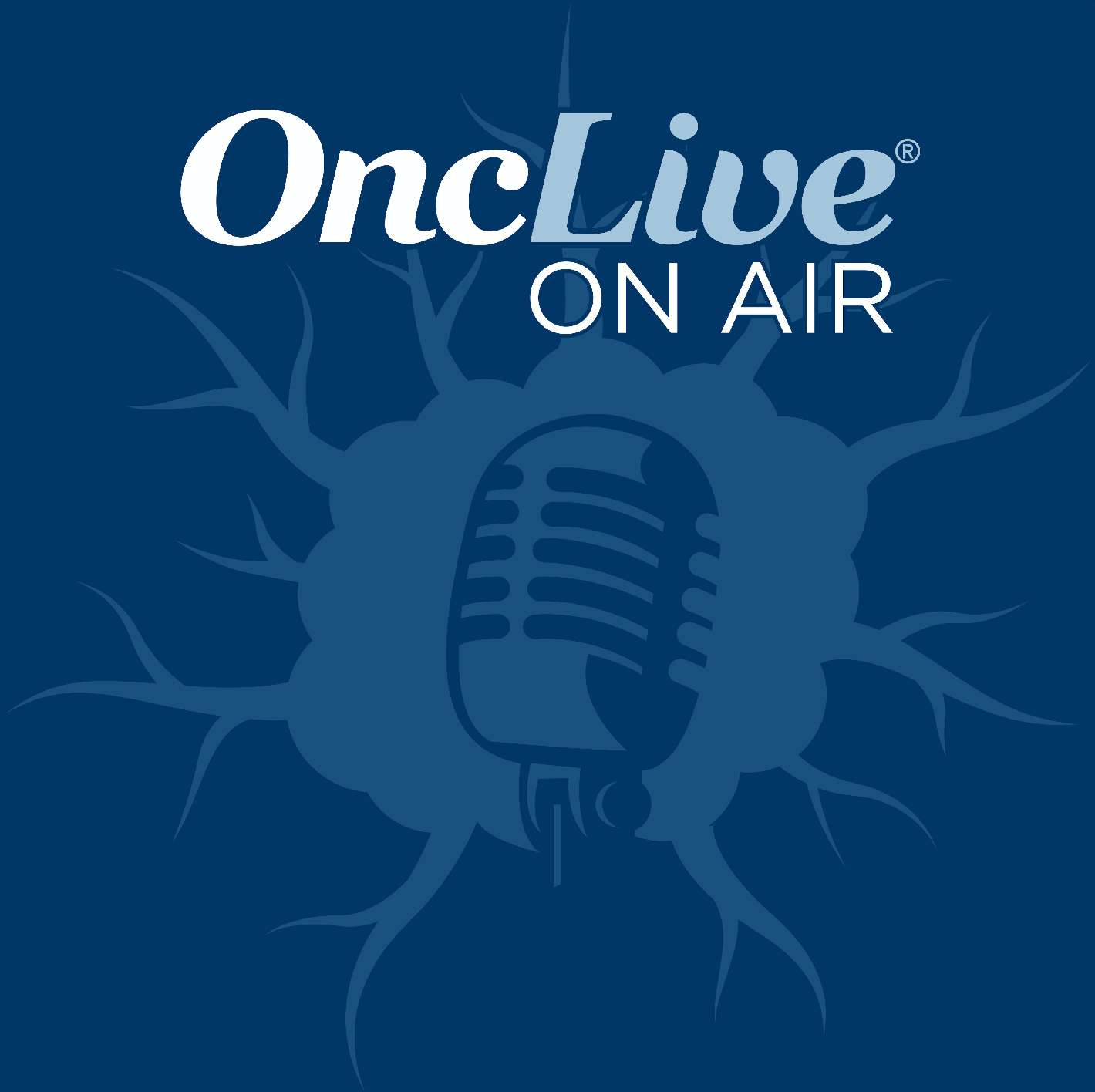Publication
Article
Oncology Live®
Surgical Intervention Provides the Foundation for Exploring Immunotherapy in Glioblastoma
Author(s):
Because the current standard-of-care modalities have significant limitations, there has been a great interest in pursuing immunotherapeutic strategies for glioblastoma.
Mahua Dey, MD

Even after the most aggressive standard-of-care multimodal treatment strategy—radiation, combining maximal safe resection with temozolomide chemotherapy, and tumor treatment fields1—the median overall survival (OS) for patients with glioblastoma (GBM), the most common adult primary brain tumor, is only 20.9 months. Numerous biological and clinical features affect survival outcomes for patients with GBM tumors; these include IDH1/2 mutations, MGMT promoter methylation, 1p/19q chromosomal arm deletions, and the absence of TERT mutations, as well as certain patient characteristics such as age, extent of surgical resection, and performance score. In addition, study results indicate that participation in clinical trials is associated with better response to standard-of-care treatment in this patient population.2
However, even patients with GBM who have favorable features eventually experience recurrence and become refractory to treatment.3 Clinical trials play a significant role in the overall management of patients with GBM and, compared with patients with other cancers, a significantly higher number of patients with GBM enroll in clinical trials over the course of their disease.4
Because of the highly infiltrative nature of this disease, complete surgical resection is never fully achieved even when “gross total resection” is confirmed by MRI. Further, because of the infiltrative nature of the tumor, radiation therapy is limited in its ability to adequately target the infiltrative disease. Finally, despite the battery of available chemotherapeutic agents, options for patients with GBM are restricted by the inability of most of these agents to cross the blood-brain barrier. Because the current standard-ofcare modalities have significant limitations, there has been a great interest in pursuing immunotherapeutic strategies for GBM.
CRACKING THE CODE FOR IMMUNOTHERAPY
In the past decade, many immunotherapeutic strategies such as peptide vaccines, monoclonal antibodies, cellbased vaccines, and the use of oncolytic viruses have been investigated both in the preclinical and clinical settings for patients with GBM. However, most resulted in negative clinical trial results.5-7 Checkpoint inhibitors, such as monoclonal antibodies against PD-1, are a highly effective form of immunotherapy for many solid cancers8-11; however, when tested in the phase 3 CheckMate 143 trial (NCT02017717) for patients with recurrent GBM, investigators observed no OS benefit.7,12 An observation that has emerged from the failed trials is that GBM tumors are highly heterogeneous and immunosuppressive in nature, and they actively manipulate the tumor immune microenvironment as well as the systemic immune system of the patient.13 Additionally, there is a significant interpatient variability in the robustness of the antitumor immune response mounted against the tumor that separates responders from nonresponders in most immunotherapy clinical trials.
PD-1 is a regulatory checkpoint molecule expressed by cytotoxic effector T cells; these cells are critical for mounting successful antitumor immune response. When PD-1 binds to its ligand, PD-L1, which is expressed by cancer cells and other immune cells, the interaction renders cytotoxic T cells ineffective or exhausted. GBM is characterized by severe T-cell dysfunction.13 Monoclonal antibodies against PD-1 disrupt this interaction and boosts antitumor immune response in the process.
Although the phase 3 CheckMate 143 trial (NCT02017717) of the PD-1 inhibitor nivolumab (Opdivo) for recurrent GBM was disappointing,7 a pilot study of neoadjuvant PD-1 blockade prior to tumor resection in patients with recurrent GBM reported intriguing results. The patients’ data showed better response to this neoadjuvant strategy compared with adjuvant PD-1 blockade.
We are just beginning to comprehend some of the basic mechanisms that drive the failure of immunotherapy in GBM. To accomplish this understanding, investigators are studying tumor biology and the associated changes in T-cell function over time. Additionally, the researchers are examining combination therapies with various treatments; this will be critical to determine the optimal strategy, timing, and delivery modality of the most successful immunotherapy regimens for GBM. The findings suggest that T-cell dysfunction and immunotherapy failure in GBM is a dynamic process, with significant cross-talk between the tumor and the immune system.
Surgical intervention, although not curative, is a cornerstone of the management of GBM and plays a critical role in the development of innovative and successful treatment strategies for patients with this disease.
Surgery provides the important opportunity to (1) remove the bulk of the tumor tissue that is expressing many immunosuppressive molecules, such as PD-1 ligand; (2) obtain tissue for comprehensive diagnosis, as well as for developing innovative research protocols and clinicaltrials; and (3) deliver therapeutics in the resection cavity after tumor removal during surgery.
Our team of dedicated brain tumor research scientists and clinicians in the Malignant Brain Tumor Laboratory, University of Wisconsin (UW) Carbone Cancer Center, led by Mahua Dey, MD, is advancing the understanding of mechanisms leading to immunotherapy failure for GBM.
Under a translational research study protocol, investigators are analyzing the effector T-cell dysfunction seen in patients with GBM and are examining the immunecell infiltration in the tumor tissue and blood samples that are collected during surgery.
This is a transitional preclinical and clinical collaboration to better understand the specific immune responses of individual patients, and to develop personalized immunotherapy options for patients with GBM.
The study’s primary aim is to understand the regulatory mechanisms that influences why certain patients mount better immune responses against GBM while others do not, and the results should help pave the way to designing effective immunotherapy. The study is currently open to all patients with GBM who are undergoing surgical resection at UW Health.
References
- Stupp R, Taillibert S, Kanner A, et al. Effect of tumor- treating fields plus maintenance temozolomide vs maintenance temozolomide alone on survival in patients with glioblastoma: a randomized clinical trial. JAMA. 2017;318(23):2306-2316. doi:10.1001/ jama.2017.18718
- Field KM, Drummond KJ, Yilmaz M, et al. Clinical trial participation and outcome for patients with glioblastoma: multivariate analysis from a comprehensive dataset. J Clin Neurosci. 2013;20(6):783-789. doi:10.1016/j. jocn.2012.09.013
- Chiocca EA, Nassiri F, Wang J, Peruzzi P, Zadeh G. Viral and other therapies for recurrent glioblastoma: is a 24-month durable response unusual? Neuro Oncol. 2019;21(1):14-25. doi:10.1093/neuonc/noy170
- Chang SM, Barker FG II, Schmidt MH, et al. Clinical trial participation among patients enrolled in the Glioma Outcomes Project. Cancer. 2002;94(10):2681-2687. doi:10.1002/cncr.10536
- Weller M, Butowski N, Tran DD, et al; ACT IV Trial Investigators. Rindopepimut with temozolomide for patients with newly diagnosed, EGFRvIII-expressing glioblastoma (ACT IV): a randomised, double-blind, international phase 3 trial. Lancet Oncol. 2017;18(10):1373-1385. doi:10.1016/ S1470-2045(17)30517-X
- Dey M, Auffinger B, Lesniak MS, Ahmed AU. Antiglioma oncolytic virotherapy: unattainable goal or a success story in the making? Future Virol. 2013;8(7):675-693. doi:10.2217/fvl.13.47
- Reardon DA, Brandes AA, Omuro A, et al. Effect of nivolumab vs bevacizumab in patients with recurrent glioblastoma: the CheckMate 143 phase 3 randomized clinical trial. JAMA Oncol. 2020;6(7):1003-1010. doi:10.1001/ jamaoncol.2020.1024
- Brahmer JR, Tykodi SS, Chow LQM, et al. Safety and activity of anti-PD-L1 antibody in patients with advanced cancer. N Engl J Med. 2012;366(26):2455-2465. doi:10.1056/ NEJMoa1200694
- Khan Burki T. Pembrolizumab for patients with advanced melanoma. Lancet Oncol. 2015;16(6):e264. doi:10.1016/ S1470-2045(15)70193-2
- Garon EB, Rizvi NA, Hui R, et al; KEYNOTE-001 Investigators. Pembrolizumab for the treatment of non-small-cell lung cancer. N Engl J Med. 2015;372(21):2018-2028. doi:10.1056/NEJMoa1501824
- Wolchok JD, Kluger H, Callahan MK, et al. Nivolumab plus ipilimumab in advanced melanoma. N Engl J Med. 2013;369(2):122-133. doi:10.1056/NEJMoa1302369. Published correction appears in N Engl J Med. 2018;379(22):2185.
- Filley AC, Henriquez M, Dey M. Recurrent glioma clinical trial, CheckMate-143: the game is not over yet. Oncotarget. 2017;8(53):91779-91794. doi:10.18632/oncotarget.21586
- Woroniecka K, Chongsathidkiet P, Rhodin K, et al. T-cell exhaustion signatures vary with tumor type and are severe in glioblastoma. Clin Cancer Res. 2018;24(17):4175-4186. doi:10.1158/1078-0432.CCR-17-1846
- Cloughesy TF, Mochizuki AY, Orpilla JR, et al. Neoadjuvant anti-PD-1 immunotherapy promotes a survival benefit with intratumoral and systemic immune responses in recurrent glioblastoma. Nat Med. 2019;25(3):477-486. doi:10.1038/s41591-018-0337-7









